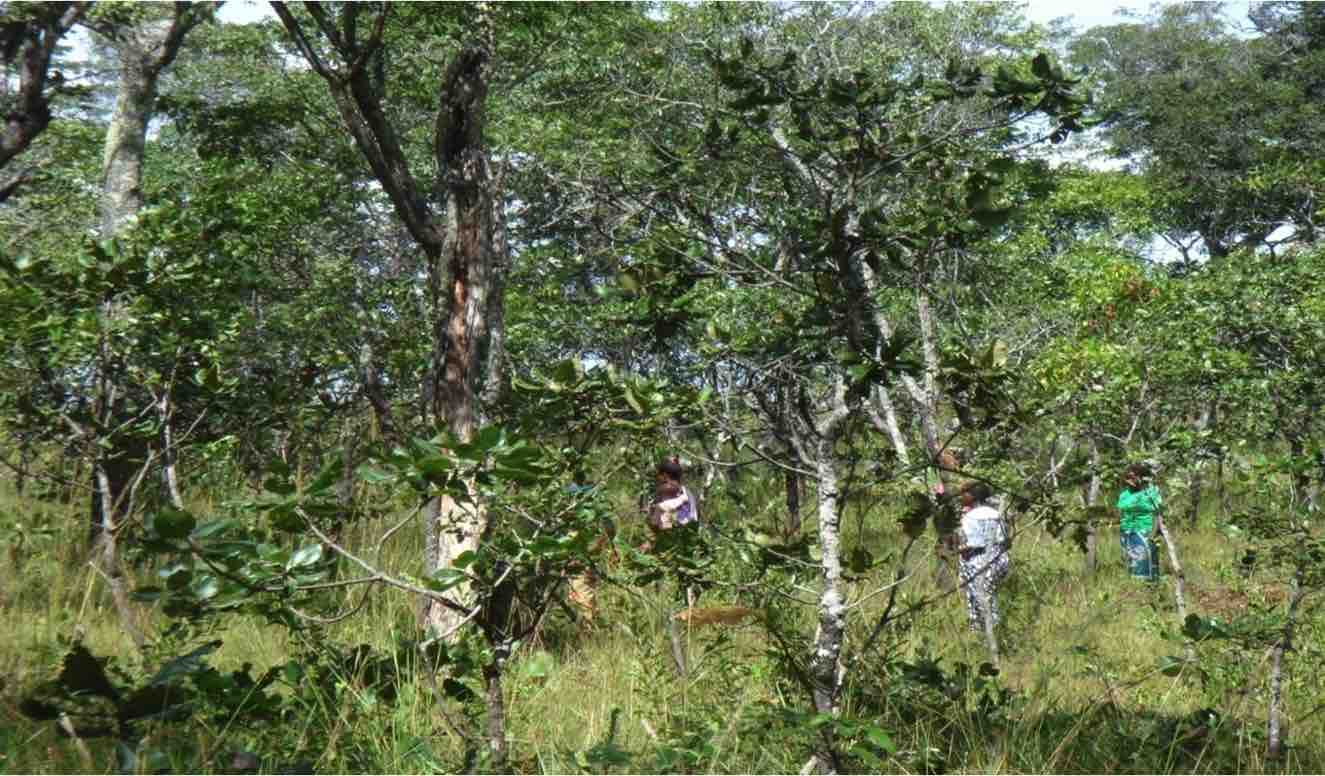The Bemba proverb “Imiti ikula empanga” can be translated to, “the trees that grow today make tomorrow’s forest.” It’s a reference to the fact that the young people of today are the future of any community or country. The proverb is a fitting banner or slogan under which to carry out the work of environmental protection because truly without forests, the future is bleak for us and generations to come. Forests absorb large amounts of carbon dioxide and are needed to mitigate climate change. Forests also prevent soil erosion while also providing habitats for animals and livelihoods for humans.
Imiti Ikula Empanga Environmental and Development Organisation (IIEEDO) was established in 2007 as a community-based response to evident degradation of the environment. It operates in northern Zambia and has branches in Chinsali, Mpika, Isoka and Nakonde.
Despite the indisputable importance of forests they are being depleted at an alarming rate. Zambia is well endowed with forest resources but these are increasingly under threat.
Clearing forests for agricultural production is a major cause of deforestation. Practices like chitemene system (slash and burn agriculture) have had a profound effect on forests in the northern region of Zambia. Most of the agricultural activities such as large-scale agricultural clearing systems, cultivation along streams or riverbanks and the semi-shifting cultivation prevalent in Zambia have had a negative effect on the environment. It has been observed that the slash and burn semi-shifting cultivation practice in areas where population densities are high, and the destructive method of cutting trees is employed, the forest regeneration process slows down.
Although Zambia is a country with abundant resources, access to electricity is still very low. Energy resources available in Zambia include wood fuel, electricity, petroleum, coal, solar and wind. Fuel wood constitutes the largest resource base for rural communities through firewood and charcoal, including some sections of urban communities, as evidenced by truckloads laden with bags of charcoal. Due to the high demand and high prices it fetches in urban areas as well as some neighbouring countries like Tanzania, charcoal is increasingly becoming an important source of income for peri-urban people.
Setting of bushfires is a fairly common practice in some sectors of Zambian society. Various communities set bushfires for a number of reasons which include: vegetation control and clearing of fire-breaks around homesteads and gardens, clearing of fields for cultivation, provision of potash, visibility improvement during hunting, as well as, gathering and pasture management.
Fire destroys the vegetative cover in agricultural areas. In tree-less areas fires may promote soil erosion by wind and by water at the on-set of the rain season before sufficient vegetative cover develops. These factors reduce the potential of woodlands to regenerate. Furthermore, bushfires destroy butterfly eggs, which produce caterpillars, a rich source of protein, hence depriving rural communities of opportunities to consume them for food and sell them for additional income.
Since it was established IIEEDO has reached out to more than one thousand households, including government officials, traditional leaders, school pupils and out-of-school youths and men and women in the communities in a bid to mitigate some of the threats to the environment in northern Zambia. Real change cannot come about without community involvement and as rural populations in northern Zambia grow, so does the threat of deforestation. We sensitise local communities on the dangers of indiscriminately cutting down trees for firewood and charcoal burning, as well as the chitemene shifting cultivation system.
Additionally we have created clubs within local communities for a more structured response to the challenges of environmental degradation. Furthermore, we have initiated community-level governance structures, as a means to strengthen conservation efforts through Community Based Natural Resources Management Teams (CBRMT).
Our vision is one where individuals and communities actively and continually conserve their environment and inrease their incomes, thereby promoting sustainable socio-economic development.
For some people slash and burn agriculture may appear to be the only means of making a living or one of very few ways to do so. It is important to offer alternatives. In light of this one of our main activities has been sensitising local communities on the dangers of deforestation, as well as the benefits of conserving their environment. Community members are trained on how to use non-wood forestry products (for example, monkey orange shells or tusongole in Bemba) to create exquisite trinkets, as an alternative income generating activity and also build capacity in members to transfer skills to their communities. There is also training in the management of plant nurseries. This simultaneously allows for skills development among community members and contributes towards reforestation.
We’re also promoting good farming practices such as crop diversification, for example, encouraging the growing of cassava instead of or in addition to maize, a crop which many Zambian farmers have become overly reliant on. Additionally, we promote beekeeping as an income generating activity, which also helps in forest conservation.
Our success story is that communities and their leaders have been sensitised about their environment. They now value well conserved forests, which are giving them a source of income. The practice of forest regeneration is established in the operational areas. The greatest achievement is moving from monocropping to crop diversity and growing crops which don’t require fertiliser. The value addition to some crops has introduced village industries. Crop diversity is helping to address climate change. Communities have felt the effect of climate change and appreciate new agricultural methods of farming.








